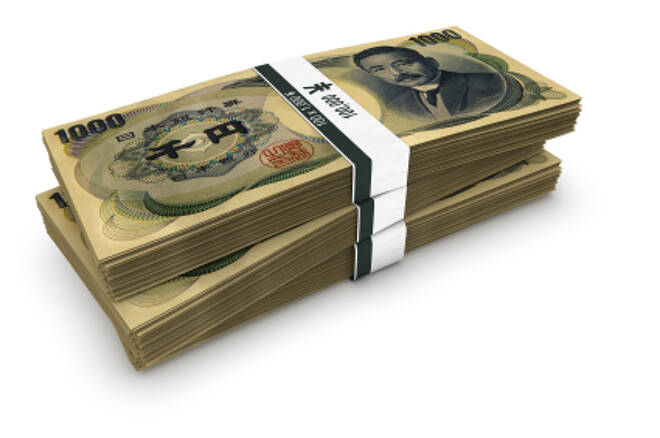Advertisement
Advertisement
USD/JPY Fundamental Forecast – September 21, 2016
By:
The U.S. Dollar traded in a tight range against the Japanese Yen on Tuesday as investors awaited the Bank of Japan’s monetary policy announcement. At 1955
The U.S. Dollar traded in a tight range against the Japanese Yen on Tuesday as investors awaited the Bank of Japan’s monetary policy announcement. At 1955 GMT, the USD/JPY was trading at 101.744, down 0.169 or -0.17%.
Not only are traders waiting for news from the BOJ, but also the U.S. Federal Reserve at 1800 GMT. On Tuesday, the USD/JPY weakened a little following the release of disappointing U.S. housing data. Housing starts in the U.S. came in at an annualized rate of 1.14 million units in August, well below the forecast of 1.19 million. Construction permits fell 0.4 percent to a 1.14 million unit rate last month.
Despite the disappointment, it wasn’t a disaster. If you look at the report as a whole, it isn’t likely to cause any issues with the Fed.
FORECAST
Needless to say, this BOJ announcement is very important and when combined with the Fed’s interest rate decision, could really shake up the foreign exchange markets. Going into the report, the chances of the USD/JPY falling to 100 or lower is very likely if the BOJ fails to impress investors. The dollar hasn’t traded at 100 Yen since mid-August.
The general consensus amongst traders is that in order to significantly weaken the Japanese Yen in the long run, the BOJ would have to implement both a program of substantial monetary easing and a rate cut. Additionally, the Fed is going to have to come out with a hawkish statement that points towards a December rate hike.
With the chances of the Fed raising rates at 12 percent ahead of the announcement, it would be a surprise if it raised rates. Combined with an aggressive BOJ strategy, the USD/JPY should appreciate considerably.
If the Fed holds off on raising rates and remains cautious in its statement, we could see considerable weakness in the dollar and strength in the Yen that would erase any attempts by the BOJ to weaken its currency.
In addition, if any actions by the central banks create global uncertainty and market volatility then investors are likely to return to the Japanese Yen for protection if a risk-off attitude prevails.
BOJ members are sharply divided over the best way to proceed against the rising Yen because of past failed attempts. The country’s banking sector is starting to see problems because of the persistently lower rates and the flat yield curve. Since the BOJ members are divided, we could see a complete pass on any significant strategy. This would, no doubt, send the Yen sharply higher. However, here are some ideas that the BOJ could implement.
It could buy corporate bonds. This would send a signal that it is determined to continue easing. The impact on the economy, however, would be limited.
The BOJ could pump more cash into the economy. Still another sign that it cares about easing. However, they’ve already done this and it isn’t working. Furthermore, it could run out of cash eventually. In effect, it would throwing good money after bad.
Thirdly, the BOJ push negative rates even lower. This was first implemented in January and has had little impact on the economy despite making home loans available for virtually no interest, for example. Banks wouldn’t like this strategy and may decide to start charging customers for their bank deposits.
The BOJ could also create confusion in the markets if it decides to set an interest rate target instead of a target for annual bond purchases. Essentially, this action would mean the central bank is starting over by erasing everything it has done over the past 3 ½ years.
Finally, the BOJ could go completely off the grid by implementing radical strategies such as buying foreign bonds, or printing new money. This is known as throwing money at the economy, or “helicopter money”. This move could cause hyperinflation and shake up the stability of the financial markets, and most of all, upset the U.S. Treasury.
About the Author
James Hyerczykauthor
James is a Florida-based technical analyst, market researcher, educator and trader with 35+ years of experience. He is an expert in the area of patterns, price and time analysis as it applies to futures, Forex, and stocks.
Did you find this article useful?
Latest news and analysis
Advertisement
